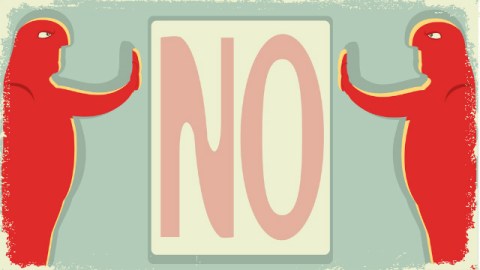Testing Our Moral Convictions: Decriminalising Child Porn To Reduce Child Crime

Last time, in the introductory post, I suggested that evidence is more important than outrage. Outrage indicates how outraged individuals want the world to be; evidence tells everyone how the world is.
Too often, we let outrage guide us; for too long, we let positions with negative social consequences, such as a lack of equal rights for women and gays, remain because the opposite appears too offensive. Yet, it could be the ideas we find most offensive which do the most good. Therefore, we must engage openly and critically with any idea – indeed, especially if we think it taboo.
To that end, we should test this with the highly sensitive but important subject of child protection. We all think protecting children from sexual violence is essential. Any research, therefore, which claims to have found ways to better protect children is worth investigating – no matter how initially counter-intuitive or repugnant it seems. The priority is always diminishing harm. Whatever achieves this is worth our time and focus. Regardless of how repulsed or enthusiastic we are the protection of children is the priority.
The idea we’re investigating is the following: If it can be reliably shown that decriminalising the possession of child pornography leads to a significant decrease in child violence, should we decriminalise child porn possession? To reiterate: it is not that producing child porn leads to less violence, since this is logically impossible (children are physically harmed in production). We are talking about access to already produced child porn. This is also not an endorsement to watch or consume child pornography – because it is not about my or your personal inclinations, but what – to reiterate – diminishes violence against children overall.
To say yes to legalisation doesn’t mean we stop prosecuting people who make child porn, nor relax our laws against violence. What it means “to have access” is itself a complicated matter – a database of, say, images of “artificial” children is the best-case scenario since it does not involve the physical harm of actual children. (Some might say the mere sexualisation of children is itself wrong, but this does not convince me. It might be utterly repugnant but not significantly harmful if, as we’ll see, it is not acted upon.)
Rape – and especially child rape – is one of the worst offenses our species commits. The horrible suffering victims endure is something no one and no thing should have to ever experience. Yet it is precisely toward lowering and ridding instances of horrible acts that we must consider what the evidence suggests, no matter how repugnant. For example, Milton Diamond and colleagues found a correlation between accessibility to all forms of pornography, including child porn, and a lower rate of child sex abuse. As Alice Park summarises in TIME:
Diamond’s group compared rates of various crimes, including sexual abuse, murders, assaults and thefts, both before and after the fall of the communist regime in the Czech republic. Before a more liberal government gained power in the country in 1989, all forms of sexually explicit material, including magazines such as Playboy, were banned, and all nudity was considered pornographic.
The new government, however, passed a law allowing some expressions of nudity, including child porn, and when Diamond and his group compared rates of child sexual abuse both before and after the communist regime was in power, they found that there were fewer cases of abuse after pornography became more accessible.
The data support previous work that found similar trends when pornography laws were relaxed in Japan and Denmark.
Importantly: During the research in the Czech Republic, Diamond noted that other crime rates did not change during the same time period. Thus, the fact that child crime went down is significant. Diamond suggests that the “the reason for the decline in child sexual abuse could be due to the fact that potential offenders were able to substitute child pornography for sexual acts themselves.”
Others confirm such a view, as psychiatrist Richard Green notes that: “patients requesting treatment in clinics for sex offenders commonly say that pornography helps them keep their abnormal sexuality within the confines of their imagination.”
Before we decide on appropriate actions in accord with Diamond’s data, we must recognise that there is no such thing as perfect research. But we don’t combat supposed flawed research with (only) outrage at the conclusions: we fight back with better research, better evidence, better science.
So even if the evidence isn’t conclusive, requiring further research, it seems clear that we need to consider clearer ways to reflect on this subject. Indeed, it is oftensuggested that the accessibility to pornography has been a significant factor in the decline of sexual violence, especially against women, in Western democracies. There’s, however, some difficulty in ascertaining the truth of this claim: After all, access to pornography usually follows or parallels equality of women, better democratic government and law enforcement, and so on. Yet, we cannot dismiss claims that access to pornography might be significant in that it provides an outlet for sexual appetite, which leads to a reduction in sexual violence. The fact that during the research in the Czech Republic all other crime rates remained fairly stable while child sexual violence went down is the reason we should take Diamond and Co.’s research seriously. Here is a clear example that access to pornography may be a significant factor – since it appears all other factors were controlled for.
It seems to me that if we could consistently and conclusively show that allowing access to child pornography lowers violence against children, then we ought to allow access. How we do so would, of course, be the problem. It doesn’t mean we say it is ok to produce child porn with real children; but perhaps, using Diamond’s own suggestion, we can find alternatives using artificial children, like cartoons or 3D models, for example, to sate people’s sexual appetite which is already the case in, say, Japan.
Some counter arguments mostly amount to equating access to child porn with violence against children – which are two different things. As was said before, it is about access to whatever child porn already exists (such as artificial porn in Japan) and precisely at preventing harm to children that we should consider this option. However, it is over this distinction that people have opposing views. I am uncertain about the distinction, myself, so I sympathise with those who would answer no to the assertion for legalisation. However I do think we need to be willing to submit to a thorough reconsideration of access to porn and the relation to actual child violence if we want to be effective in lowering crimes against children.
There is also a very thoughtful counter-argument by Thomas Schirrmacher, which I think does a good job of pointing out some of Diamond’s flaws. But even if Diamond’s thesis is wrong – which scientifically can be shown – it doesn’t diminish my overall point that we ought to be willing to follow the evidence, even in extreme cases, because it might be effective in diminishing harm toward children. How we do so is the next question, but we can only get there by being willing to engage in taboo ideas. Of course who provides the evidence, Schirchmacher points out, is also telling, so we must always be careful of biases (commenter ‘millerw’ pointed this out last time).
All this, remember, is premised on the idea that the evidence really does indicate that having such access lowers violence overall. And of that, we probably need further research. But in order to even do that research, we must be willing to test these uncomfortable ideas in the first place and act and think accordingly upon obtaining conclusive evidence.
Update (20.02.2012): Andrew Verrijdt has a new column at the Mail & Guardian discussing Greece’s new decision to view pedophilia as a disability, worthy of a grant. He also considers pedophilia as not by definition, wrong, unless it is acted upon. “Being afflicted with a psychological disorder is beyond your control,” he writes. “There is nothing wrong with having pyromania, but there is something wrong with being an arsonist.”
Image Credit: Tancha/Shutterstock.com




